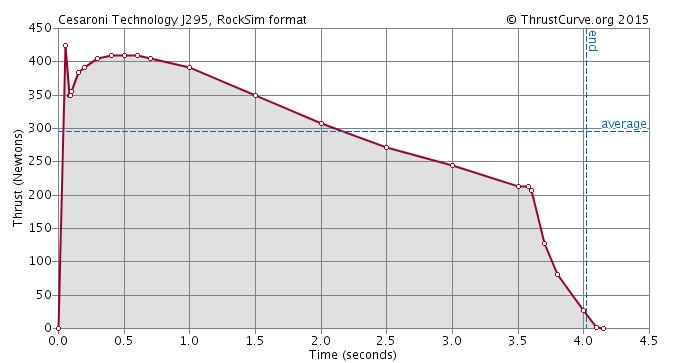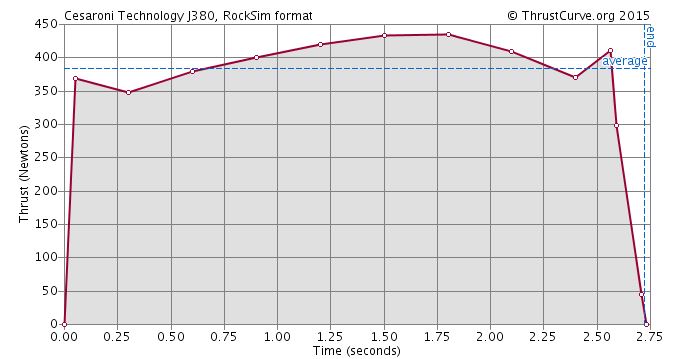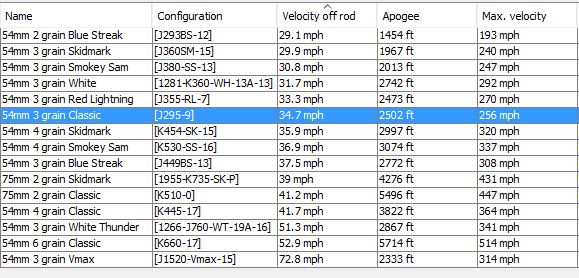Nathan
☢
- Joined
- Apr 19, 2012
- Messages
- 2,230
- Reaction score
- 755
Today at the Battlepark launch the RSO would not allow me to fly my Frenzy XL on a CTI 54mm 3 grain J295 Classic motor because it did not pass the 5:1 thrust-to-weight ratio rule. According to the 5:1 rule, my 17 lb Frenzy XL requires a motor with an average thrust of at least 378 newtons. By that standard, it should be safe to fly on a CTI J380 Smokey Sam but not on a CTI J295 Classic. The problem is that the 5:1 rule does not take into account the thrust curve. Like all CTI Classic motors, the J295 has a thrust curve that starts off with lots of power and then tapers off as it burns. The J295 has more initial thrust than a J380 but the J295 burns for a relatively long 4 seconds so it has lower average thrust. OpenRocket simulations for my Frenzy XL with the J295 and J380 show that with the J295 it has higher velocity off the rod, higher maximum velocity, and higher altitude than it does with the J380. The J295 also has higher total impulse than the J380 (1196 Ns for the J295 compared to 1043 Ns for the J380).
Another consideration that needs to be factored in to the decision is the stability of the rocket. A marginally stable rocket is more likely to have problems with a low thrust-to-weight ratio motor that a very stable rocket. My Frenzy XL is very stable, with a stability of about 3.5 cal with either of these motors.
I have flown my Frenzy XL on a J295 before and it was fine. I understand the reasoning behind the 5:1 thrust-to-weight rule but without taking other factors into consideration, it is an incomplete tool for determining which motors are safe to fly with which rockets.


Another consideration that needs to be factored in to the decision is the stability of the rocket. A marginally stable rocket is more likely to have problems with a low thrust-to-weight ratio motor that a very stable rocket. My Frenzy XL is very stable, with a stability of about 3.5 cal with either of these motors.
I have flown my Frenzy XL on a J295 before and it was fine. I understand the reasoning behind the 5:1 thrust-to-weight rule but without taking other factors into consideration, it is an incomplete tool for determining which motors are safe to fly with which rockets.


Last edited:





